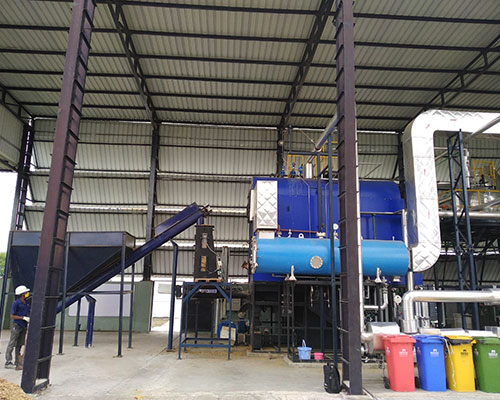
-
-
CALL US NOW
+91 78600 24711

Heat is vital to everybody’s life. Heat is required for the survival of all living beings. In absence of heat or right temperature, a large percentage of the population of the world may be dead. Sun caters to most of the heat demands from the earth. However, if heat came only from the sun rays, a larger area of the earth would be inhabitable for man. Artificial heating (thermal heating) is therefore necessary.
In addition to this there are many technical processes that are only possible through heat example cooking, boiling, textile etc.. Heat is therefore necessary for heating buildings and many industrial purposes. Water as a heat carrier has many favorable properties such as high energy absorption and easy transport-ability.
Water is easily available everywhere and is not harmful to the environment. Boiling point at atmospheric pressure is relatively low however when temperature is higher than 100 degree C the heat carrier can be pressurized which causes the boiling point to be raised.
Industrial boiler systems can cope with much more pressure than pressure cookers. These boilers are made up of thick iron plates which can be as thick as 36 mm. Making pressure of 300 psi and more possible.
Hot water and steam boilers are usually similar in design. The boiler pressure vessel is usually horizontal , cylindrical tubes closed at both sides with an end plate insulated at both sides.
There is a combustion chamber in which fuel is burnt (1 pass) and an internally situated reversible chamber which again reverse the flue gas and lead them back in 2nd smoke tube pass.
On the front of the boiler there is an external reversing chamber which again reverse the flue gases and lead them to the end of the boiler in 3 pass smoke tubes.
Hot water boilers are usually completely filled with water during operation. Steam boilers on the other hands are usually 3/4th filled with water, the upper quarter is the steam space.
The heart of an industrial boiler system is a hot water or steam boiler operated with a certain kind of fuel. The boiler heats up or boils the water inside it which is then delivered to the consumers via steam pipe lines.
In case of hot water the transport energy is generated by pumps, in case of steam the transport energy is based on inherent pressure. The cooled water or the condensed steam returned to the boiler where it can be heated again.
Loss of water must be compensated by adding more water to the boiler to prevent corrosion. Flue gas generated by the combustion chamber discharged into the atmosphere through a chimney. Sometimes an efficient system used the residual heat in flue gases.
Industrial hot water boiler systems for generating thermal heat are very similar to the household heating boiler. The main difference is that industrial boilers are dimensionally larger than household heating boilers so their heating capacity is not only significant for only family but also for hotels , hospitals.
The common use of boiler system are as follow: